by bassybeats | Jul 24, 2022 | Computing
This Willem Eprom Programmer V4.5 build should have been an easy one but it turns out, when you have the wrong parts without knowing it, it turns into a much harder job.
Building the unit
Most of this build was fairly straight forward other than I had to swap the ZIFF socket out as it was cracked right through the middle. Some of the parts were not easy to find and I had to get them through a friend from mouser like the CD4503 and the CD4015’s.
The never ending Parallel Cable fun
My choice to use a parallel/db25 extension cable would come back to haunt me. I tried using a gender changer adapter to get it to work but no matter what I did, it would just not detect it on the PC. I soon found out that the ‘Parallel extension’ cable I had purchased was actually a DB25 serial cable and not all the pins were actually wired. Once I had desoldered the connector, put on a female DB25 connector on the board and used a different fully wired cable, the device sprang into life!. So a word of warning, make sure the cables have all pins wired up.
Another thing to check, is that you need to use the right version of the software. For the V4.5 board, I used the 0.97ja.
by bassybeats | Jul 24, 2022 | Computing
This was an odd pickup where the machine had a cracked screen AND a dead SSD, so the only way to replace the SSD was to also replace the screen. Which I found out was not a very fun job.
Ordering the screen
I scored a new to me screen on Trademe for $10 and when it arrived it was apparent that the touch screen ribbon cable had been severed during the removal process by the previous owner. So I ended up removing the touch screen module and just turning this Surface Pro 3 into a regular tablet.
The Guts
The Surface Pro 3 uses an annoying mSATA m.2 drive which are far less common in 2021 So I had to troll trademe and marketplace to find something. I scored a $25 64gb drive that was smaller than the stock one but would at least get this machine back into a working state.
Installing the OS
For whatever reason, Windows 10 was just extremely slow on this machine. I’m not sure if its an issue with the new SSD or what but it was fine with Linux so I just stuck with that. Linux Mint was, as usual the OS of choice.
by bassybeats | Feb 8, 2022 | Computing, Retro Gaming
Starting DOS 6.22 image
This was a very long running project that started off with a Direct Access 5 based DOS 6.22 image from my mate with a fairly stock install with some utilities and games loaded on it with a bunch of sound card drivers. This image was targeting a 512mb compact flash card size. I really wanted to ‘max’ out the stock DOS 6.22/FAT16 partition size of 2GB so I had to start again.
Software Selection
To make the most of the 2GB CF card size I had to compile a list and collection of games, utilities, demos and programs. I opted to exclude CD based games as they are too big and getting virtual CD iso’s working is not an easy task.
Base Image
To get the image prepped, I did a clean install of DOS 6.22 onto a 2GB CF Card and then ported over my mates files to it. The base machine it was built on was a DX4-100 486 machine with 32mb ram, Sound Blaster 16, dual floppy, cd drive and XTIDE card.
Once that was done I added the DOS menu from Phils Computer Lab also adding his autoexec.bat and config.sys. After that, I imaged the cf card so I had a backup incase I messed it up while building it out. Something to take note, not all CF cards are made equal and you need to take note of the image size. I had to make 2 images in the end as one card was 2048mb and the other 2079, so the larger image won’t fit on the smaller card if you want to duplicate the image to more cards.
Menu Structure
I tried to split the main menu structure up into obvious and easily identifiable areas. Going from:
Windows 3.1, Configuration tools, File Management, Graphics and Audio software, Phils Computer Lab benchmarks, Action Games, Adventure Games, Beat’em Up games, Fighting Games, Flying Games, Platformers, Puzzle Games, Racing Games, RPG’s, Shooters, RTS Games, Simulators, System Information, Programming Tools, Office Apps, Diagnostics, Utilities, Demo Scene stuff, Launch Box and Emulators.
Menu Configuration
As for the menu configuration I decided to remove the Direct Access boot screen and have it go directly to the menu and added a little 2001 Space Odyssey reference with a red and black theme.
The folder structure on the CF card mimics the menu structure with the exception of the folder and file names as they have a 8 character limit before the do the ~1 thing. Within the sub menu’s, its just a matter of manually typing out the menu items, navigating to the folder and launch exe or bat file. For bat files, you have to type BATCH in front of the file name to get it to launch. For Windows 3.1 applications or games you have to type WIN in front of the filename. You can parse through commands using the custom option in the menu, this lets you CD into a directory or set parameters on the exe file for example, this is how I setup the floppy disk tests and other options in the configuration and diagnostic menus.
Its all Working
After ALOT of testing, I got all games and apps launching. Some of the big hurdles were getting the WIN command to parse through ( needed to set some settings in the config.sys/autoexec ), getting the BLASTER settings right, getting the C64 emulator working with games, getting the Apple II emulator working. I ended up dropping a lot of apps due to them needing the cd or having multi floppy installs or just wouldn’t install. Some games I dropped due to them being unexciting or glitchy. Planet X2, Commander Keen and Doom were my go to test games for sound and graphics.
Some creature comforts I added were the TAB auto complete function and command history function from FreeDOS as well as the mouse drivers.
Just to be cautious, I imaged it at this stage onto my NAS so I couldn’t screw it up. I also removed a couple of things and ported it to the smaller 2049mb CF card as well.
FreeDOS attempt
Once I had the main DOS 6.22 working I did a clean FreeDOS install on a new CF Card and moved over the files, which proved to be extremely annoying with floppy installs constantly failing and CD installs locking up. I ended up using the R2 version that worked a treat first time. I had to replace the boot menu, autoexec and config.sys but it basically just worked, EXCEPT that Windows 3.1 basically doesn’t work with the FreeDOS memory manager. After a couple of days trying to get it working I ended up giving up. This was intended to be my FAT32 version of this build.
Future Ideas
Something that I would like to get going is CD ISO emulation on a larger drive using DOS 7.1 or FreeDOS. But I just had no luck getting it to work, and CD ISO emulation has the limitation of no CD audio.
I’d also like to try find a way to have sound card options that were switchable from a menu. Something like, run a batch file that comments out the Soundblaster settings and uncomments the gavis audio ones and visa versa. But DOS command line fu is not strong enough.
by bassybeats | Aug 25, 2021 | Computing
As with some of my other projects, these machines came from the vintage tech sale in Q1 2020 just before the first lockdown. The sale was absolutely massive ( a few photos below ) and there were bins upon bins of laptops, which at the time had been a big attraction for me as you can play around with different setups without taking up too much space. I did a quick boot test and one of them booted up with Windows 3.11 and the others didn’t power up at all. I did end up going back the next day and getting the other T4700CS for parts, so I ended up with 4 in total:
- 2x T4900CT, Pentium 75 machine
- T4850CT, 486-DX4 machine
- T4700CS, 486-DX2 machine
Diagnosis
Breaking down the machines, one of the T4900CT worked out of the box, just had a bad hard drive and a dead battery. The T4850 did not power on at all, it turns out that it was some of the capacitors on the power supply module, which once swapped it worked perfectly well. The T4700CS worked but the screen had dead pixels all through it and the other T4900CT didn’t work, but when I swapped the motherboards it has had a screen with a dead pixels.
This left me with a working T4850CT, a working T4900CT and a working T4700CS with a bad screen.
Donor parts hunting
I did some hunting slowly online and spotted a T4850CT with on eBay with $15USD in somewhat good condition. I ordered it and got it drop shipped here via NZPost. Trick for the future, they do not ship devices with NiMH batteries in there. Once it arrived, I attempted to boot it up and was greeted with a dead machine, not unexpected for its ages. As the T4700 and the T4850CT share the same platform I I swapped over the working motherboard from the 4700 and it kicked into life, and it even had a good screen and power supply! So I ended up with a T4850CT with a DX2 not a DX4, not the end of the world. I swapped over the best parts of each unit and put them both together. Turns out two of the machines had ram expanders as well so I put them in the T4900 and the T4850.
This left me with 3 working units, two totally dead units. I sold off the dead ones on trademe in case someone needed parts from them. All in all a good restoration so far from a big of laptops at a random sale. Two slight things I still need to look into is that the floppy drives don’t seem to read disks, but that is for another day and the the DX2 4850 needs a new CMOS battery.
Loading up DOS Images
I loaded up my usual DOS image that I made and it all works perfectly. One thing to note on these machines is they will not see any drive over 2GB, this is a bios limit NOT a Dos 6.22 limit. I have dropped some screenshots of what is included in my DOS image if anyone is curious.
Specifications
Below is some of the specs of the machines but the general rundown is:\
- T4900CT, Pentium 75mhz, 24MB of ram ( inc expansion card ), 2GB DOS 6.22 CF card, 1.44MB 3.5″ floppy, 10.4″ TFT Color Display 640×480,
- Vesa Local-bus video adapter, C&T F65545, Analog Devices AD1848KP & Yamaha OPL3
- T4850CT, 486-DX4 75mhz, 24MB of ram ( inc expansion card ), 2GB DOS 6.22 CF card, 1.44MB 3.5″ floppy, 10.4″ TFT Color Display 640×480, WD90C24A2 video chip, Analog Devices AD1848KP & Yamaha OPL3
- T4850CT, 486-DX2 50mhz, 8MB of ram ( inc expansion card ), 2GB DOS 6.22 CF card, 1.44MB 3.5″ floppy,10.4″ TFT Color Display 640×480, WD90C24A2 video chip, Analog Devices AD1848KP & Yamaha OPL3
Performance
Some interesting results benchmarking running the system information tool in Phils Computer Lab pack. The disk speed on the T4900 was higher even though they all had the same CF to IDE adapters in them. The CPU speeds, well the Pentium clearly was faster at 237.6 but the DX4 and DX2 were the same at 73 which shows the test doesn’t make much difference on a DX4. The over tests also seem to reflect this as well.
The final working units
Overall, a cool project and I ended up with some fun machines to play with. Just need to figure out how to get those damn floppy drives working.
- T4900CT, Pentium 75mhz, 24MB of ram
- T4850CT, 486-DX4 75mhz, 24MB of ram
- T4850CT, 486-DX2 50mhz, 8MB of ram
by bassybeats | Aug 22, 2021 | Retro Gaming
This was a cool Trademe pickup that I had no idea what was wrong with it, all I knew was that it took full sized SNES carts and was handheld and I had to have it. When I got it, the screen was showing corrupt data and the USB charge port didn’t work.
Repairs Round 1
The first round of repairs was a bit of a mystery and I attempted to get the original screen working. But it appeared that LCD driver board had a hardware fault with it as I purchased a new screen and it had the same issues. I then purchased a car reverse monitor of the same screen size and managed to get the device working. Unfortunately, I killed the powerboard for it some how as well as still hadn’t figured out how to power it off the device instead of the benchtop power supply.
Repairs Round 2
Destined to get this project off my bench I reordered the reverse monitor as well as a power supply board that would take the 7.4V from the battery and boost it to 12V that the screen needed. The wiring was a bit tricky and getting the screen to fit was a nightmare but it actually works.
Final Outcome
The final position of this unit is an interesting one. The unit is full assembled, works and plays games and plays when running off the charger but not off the battery. I think the convertor board/screen draw too much current from the battery for the the device to work. This is an issue I can resolve later if I ever find a better screen that runs at the correct voltage.



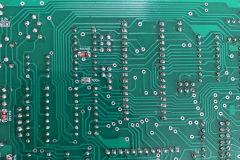
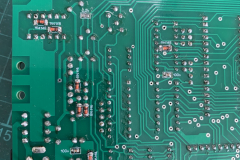


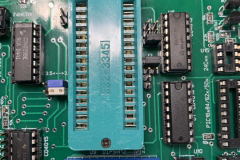














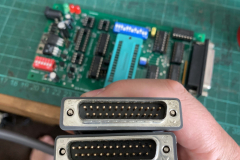






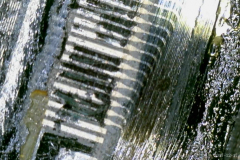
















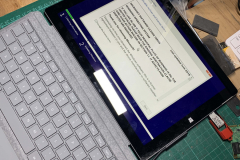

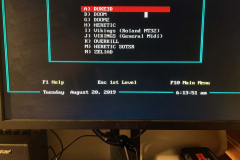






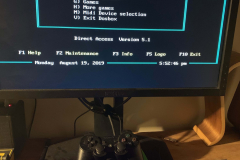













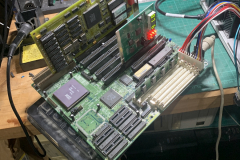


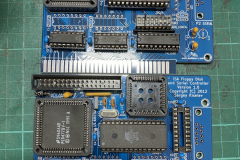






















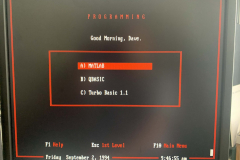


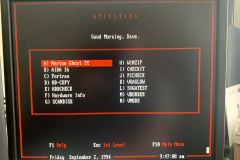









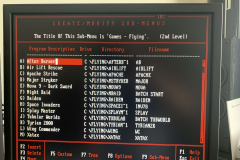







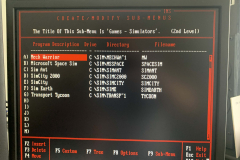



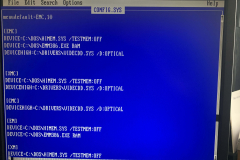























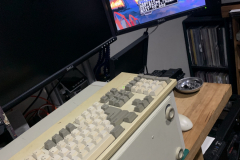








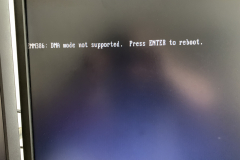







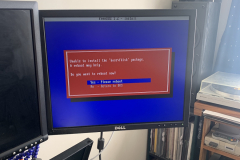


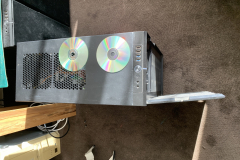
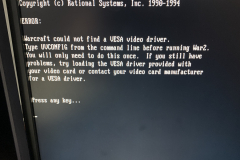



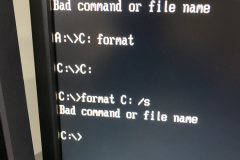


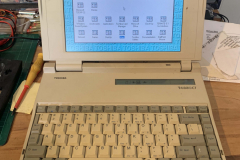


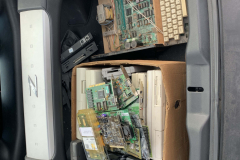


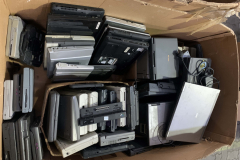










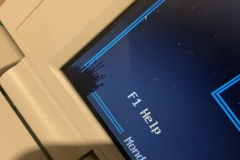





































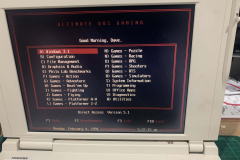
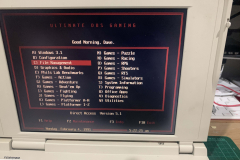





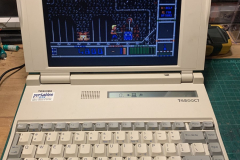







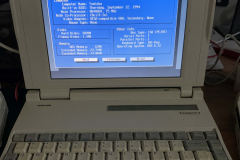



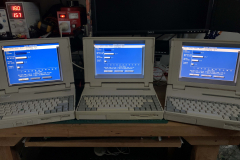

















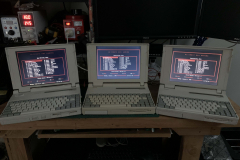












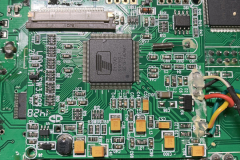













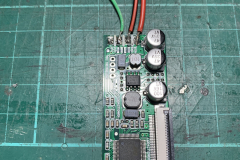






Recent Comments